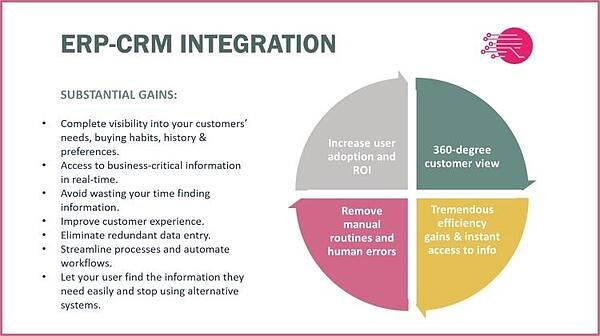Prime Your Business For Success With Data Replication Technology

Dedicated team-members and accurate data are the lifeblood of any sustainable organization. This is the age of information, and high-quality, accurate data is crucial to responsive, effective decision-making.
Data integration is one of the best ways to ensure that your business processes are optimized, agile, and able to keep you and your team-members all on the same page. Data integration technology removes siloes between different data repositories such as disparate enterprise resource management software and customer relationship management software. Companies like Rapidi specialize in data integration and replication technology, offering your enterprise the perfect solution to many common data management problems.
Are Data Integration and Data Replication Interchangeable?
No. Data integration and data replication are two different solutions that fit separate but related niches in terms of data management and organization. Data replication has to do with how data is propagated across an organization’s servers. Data integration has to do with eliminating unwanted data siloing and pooling formerly disparate data banks into a single point of truth. For example, Salesforce and a Microsoft Dynamics ERP are meant to streamline very different parts of a company’s day-to-day functionality. However, many team-members that may have access only to one or the other would likely benefit from access to all the information available. A comprehensive, 360-degree view of customer analytics is crucial for planning effective outreach.
Some newer software is marketed as an ERP and CRM rolled into one. While this may seem like an excellent way to cut out the need for a middleman, there is a good reason to choose separate ERP and CRM solutions. Industry titans like Salesforce or the Microsoft Dynamics ERP product suite set the standard in their respective fields because they have been perfected and honed over decades into the powerhouses they are today. No all-in-one software is able to hold a candle to their breadth, depth, adaptability, efficiency, popularity, and intuitiveness.
Meanwhile, an effective data replication solution ensures that any change to a customer’s profile on a given server is then propagated outwards in near-real time to all other servers, even if those servers are stationed on another continent. Quality data replication technology ensures that any changes made to a data repository are consistent across the entire network, and everyone is working with the same up-to-date, accurate information.
What Makes Data Replication A Pivotal Element of Today’s Businesses?
Data replication is vital not only as a failsafe in the event of critical system failure, but as a method of optimizing day-to-day operations. Data replication not only ensures that your organization can recover quickly in the event of a power outage but also ensures that data dissemination is automated and painless. Synchronizing data across an informational network is crucial to organizational responsiveness, agility, and sustainability. Today more than ever it’s vital for a business to be able to pivot quickly in response to customer and market pressure, and get back on their feet after a setback. After all, time stops for no one, and in an ever more competitive market environment, every second and every bit of data counts for something. Quality data replication technology ensures that your team, no matter where they are, can base their work off the same accurate, updated information. When everyone is on the same page, there’s far less opportunity for human error to hinder operations.
So what kinds of data replication technology exist? There are a few main kinds, and none is inherently better than all the rest. Rather, the type of organization will likely determine what kind of replication technology is ideal. There are pros and cons to each, and it’s worth looking into each extensively before implementing a solution. Below are some of the most prevalent types of replication technology available today.
- Full Table Replication
In this iteration, an entire database is replicated to a network of other data hosts. This means that every data center ends up with identical data sets, no matter the location.
- Synchronous Replication
In this variant, the replication and transfer of new or altered data occurs in real time. Unlike Full Table Replication, only the new or edited data is propagated to other server nodes.
- Snapshot Replication
This variant is akin to taking a “snapshot” of a given data set at a particular point in time, thereby allowing data to be restored to exactly that arrangement if need be.
- Asynchronous Replication
The counterpart to synchronous replication, asynchronous replication involves the replication and transfer of new or altered data in near-real-time or on a schedule. This drastically cuts down on bandwidth use, and is usually far more cost-effective.
Success Starts With Rapidi.
The Rapidi Replicator is Rapidi’s proprietary data replication solution, nearly thirty years in the making. Constantly fine-tuned according to best practices, the Rapidi Replicator is a perfect fit for organizations juggling distributed Dynamics ERP installations and local databases. The Rapidi Replicator works seamlessly even if a given organization doesn’t make use of an MS-SQL database. The Rapidi Connector functions via an on-premise network and connects with the Rapidi Replicator online. The Connector enables encrypted, superfast, completely secure communication between all nodes. Do you want to learn more about how Rapidi’s cutting-edge technology can position your business for exponential growth? Click here.
